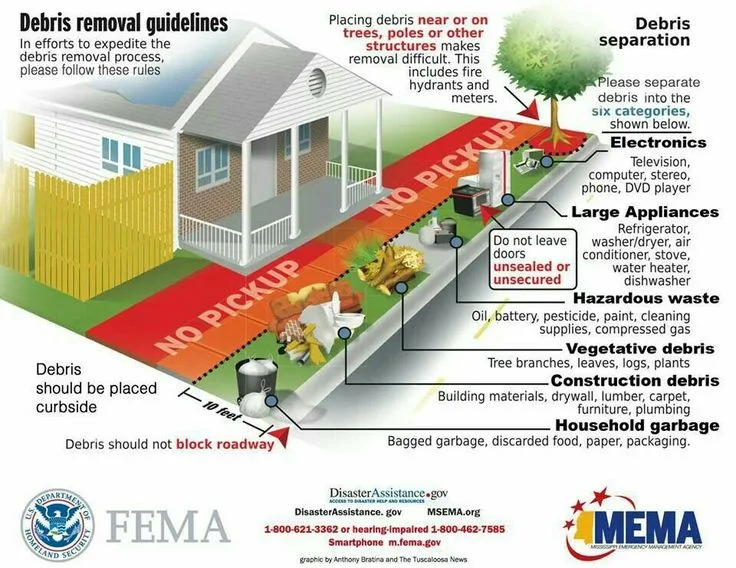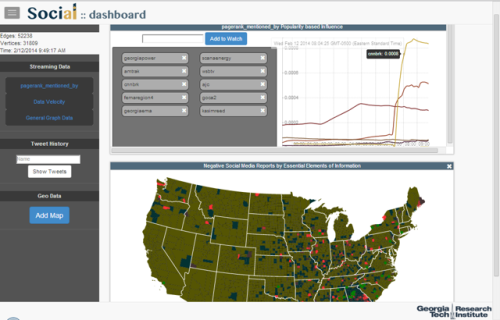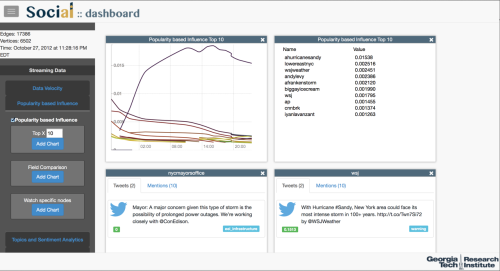This article was first published in the April issue of the IAEM Bulletin and highlighted lessons learned from a Joint Interagency Field Exploration that put technologists and decision makers in the same room to achieve new possibilities. Mary Jo Flynn was the 1st author. I supported this article as a 2nd author. We both participated in the event.
High impact and high visibility disasters have increasingly revealed the proliferation and widespread use of mobile devices, social media, photos, videos, and other sensory data and channels as information sources. This information can be helpful in planning for, responding to, and recovering from disasters and emergencies. The amount and speed of available information, however, in addition to a lack in ability to identify, verify, aggregate, coordinate, and contextualize information gleaned from social media, leaves data often unused and un-actionable.
The JIFX
To address technology gaps across a variety of disciplines, including information sharing, the U.S. Department of Homeland Security Science and Technology Directorate, in partnership with the Office of the Secretary of Defense and the Naval Postgraduate School, hosts the Joint Interagency Field Exploration (JIFX). Each quarter, JIFX participants utilize different methods of interaction, all of which focus on end user input, which reflects and address the most complex challenges identified by those directly engaged in homeland defense and security. JIFX 2014-2, held at Camp Roberts, Ca., February 10-13, offered participants an opportunity to participate in an experiment looking at the usefulness of social media and data to address agency mission objectives and pre-existing information requirements to achieve enhanced situational awareness and decision support.
Participants
Members of the DHS Virtual Social Media Working Group, including individuals from Anaheim [Ca.] Emergency Management, San Francisco Department of Emergency Management, Johnson County [Ks.] Sheriff, New York City Office of Emergency Management, George Washington University, Wright State University, Humanity Road, U.S. Health and Human Services, U.S. Northern Command, the National Guard, and many others participated in a three day event to test how useful information gleaned from social media sources could have been during Hurricane Sandy, if it had been easily available. Several technology companies participated as well, offering their tools for the purposes of testing how to identify, leverage, integrate, and visualize social media and other types of data within an operational environment.
Scenario
The scenario was based on factual data identified from actual events in Hurricane Sandy, and included several “moves” that spanned the pre-event, onset and response, and recovery phases of the incident and included weather conditions, storm effects on Critical Infrastructure and Key Resources (CIKR), ongoing response efforts, population actions, and social media. Participants and technologists worked together to identify what type of information, if any, could be leveraged from additional sources to inform emergency response decision-making during the event. The group focused on specific information needs from within these various areas, specifically focusing on mission requirements, applicable keywords, potential thresholds to assist with prioritization of available information, the essential elements of the information needed including technical specifics (e.g. detail, format, update frequency, visualization method, etc.).
As the exercise played out, participants concluded that the data available, which had been stripped of personally identifiable information (PII), was not detailed enough to produce a clear picture of events as they unfolded. Difficulties arose as well, in the discussions between the technologists and the participants (end users) regarding the specific objectives, requirements, and applications of the available technologies. It became apparent that there was a significant disconnect in concept, meaning, and terminology that must be addressed in order to support future technology development.
Since the exercise plan was already built around a storm scenario, the group decided to switch to a live event, the Nor’easter poised to hit Atlanta, Georgia and the East Coast, on February 12 and 13. The exercise was modified to allow all technologists to perform work in teams while subject matter experts provided information on data needs for decision making and appropriate visualizations. Subject matter experts provided a real-world link to actual impacted communities through Humanity Road, which officially activated to support response to the event, and other connections established during the exercise.
Lessons Learned
The transition to a live scenario proved informative as technologists attempted to adjust their solutions to the needs of emergency managers in real-time. One key finding was that technologies need focus on 1) anomaly and change detection and then 2) enable the decision maker to inquire further about other potential impacts or why such a change or event is taking place. Another key finding was that while automated search may help to build situational awareness, full accounts are still best made by the experts who can contextualize information better and faster than information systems. Despite decisions still being held by an individual, the technologies at the JIFX provided significantly greater insight into the awareness of the situation when integrated with other data sources and technologies.
Participants identified several additional lessons learned, including:
- The need to identify information requirements, both individually, and in “packages” (e.g. groups of information that, together, satisfy various questions). there is a need for better categorization and discoverability of available data to ensure potential resources are identified prior to an event;
- Mission objectives must be pre-identified and defined to align with technical requirements to ensure technology is leveraged effectively.
- Establishment of baseline monitoring capabilities will be useful in determining the occurrence of events, or anomaly detection.
- While automation of analysis will help in minimizing the time required to identify useful information, manual input and/or consideration will help to ensure the veracity and applicability of found information.
- Definition of relationships between multiple information sources, including cascading effects and additional information requirements, will assist in further contextualizing information as it relates to the operational environment at hand.
- Due to the volume of data available, filtering queries as defined by pre-existing mission and information objectives may prove more useful than filtering all results.
Conclusion
The shift from scenario to live event clearly demonstrated a need for real-time analysis of technologies to accurately determine the usefulness of tools. Additionally, the removal of all PII presented a challenge to government agencies needing crucial life-saving information; additional consideration is necessary in order to best identify how to move forward in trend analysis, ensuring information that is accessible, whether limited by various policies and legal considerations, is used efficiently and effectively.





![[REPORT] Assessing Your Organization's #SMEM Capabilities](https://images.squarespace-cdn.com/content/v1/53a9cfb7e4b0ac3522f6060f/1404844244127-ZILU7NV7DPFZSANQJPSQ/224195765+SMEM+Canadian+Project+Final+Document+2.png)

![[NEW REPORT] Using Social Media for Enhanced Situational Awareness and Decision Support](https://images.squarespace-cdn.com/content/v1/53a9cfb7e4b0ac3522f6060f/1404246926192-8NVOSY9D607ZH4SO3NV7/Social+Media+Study.jpg)





